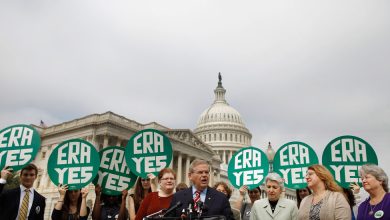The Great Tension Inside the Trump G.O.P.

This week the populist think tank American Compass released polling showing that larger shares of Republican voters said they believed that the federal government should be doing more, rather than less, to provide “support for the poor, disabled, needy” and “medical care for those who need help affording insurance” and to sustain Social Security and Medicare.
How might these commitments be paid for if these pro-government Republicans had their way? A different poll, from Bloomberg and Morning Consult, suggested one possible answer: Surveying voters in seven swing states, it found that 58 percent of self-described conservative Republicans strongly or somewhat supported raising taxes on Americans making $400,000 or more a year.
These populist perspectives — tax the upper class and spend on health care and income support — aren’t especially surprising, given the Republican Party’s slow transformation into a more downscale coalition, a process in which it has gained blue-collar and non-college-educated supporters and lost affluent suburbanites to the Democratic Party.
But good luck finding evidence of this populist transformation in the party’s current policy proposals. Consider, for instance, the latest budget proposal from the Republican Study Committee, the conservative House caucus that claims about 80 percent of Republican representatives as members. The document makes the same general pledges that the party’s conservatives have made for decades, from the era of Newt Gingrich to the years of Paul Ryan: It wants to make the Trump-era tax cuts permanent, it calls for “extending and improving” tax cuts for corporations and abolishing the estate tax, and it wants to pay for its tax cuts by reducing what the government spends on Medicaid, Obamacare and old-age entitlements.
Whatever you think of these ideas, they don’t seem to match especially well onto either the American Compass polling or the general transformation of the Republican coalition.
This mismatch existed already in the Gingrich era and in the Ryan years, but the gap has clearly widened. And across years of analysis and disputation — to which I’ve contributed too many words to contemplate — there’s often been an assumption that at some point, the basic commitments of the median G.O.P. politician will have to shift to match the increasing populism of constituents.





